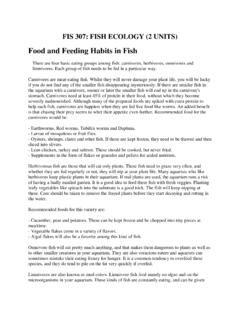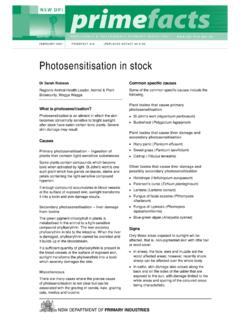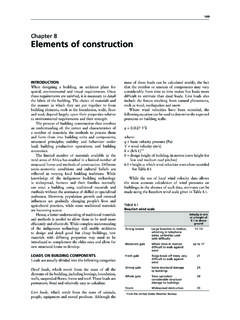Transcription of Ideas for interpreting heritage sites
1 1 Ideas for interpreting heritage sitesBored of boards! 2 Think like a wise man, but communicate in the language of the people YeatsDone well, heritage interpretation can enhance the visitor experience. It may also strengthen the relationship between the site and those who live around it. Furthermore, by improving the attractiveness of a site , interpretation can lead to economic benefits for the wider area. Done badly, it can inaccurately communicate the meanings of the site and alienate those who visit. It can also physically damage the historic material if poorly specified and installed. Currently, the interpretation of Ireland s historic places is dominated by panels. Although very useful, there is more to interpretation than just the use of text heavy boards. The primary objective of this document is to show what other media can be used. Nonetheless, some guidance on interpretive panels is provided. Most of the methods shown are durable, low maintenance and relatively low tech.
2 Introduction12 Some definitionsA heritage site is a place that has been deemed to be of historical or cultural importance by a section or sections of society. heritage interpretation is the communication of the meaning or meanings of a place through a variety of media. According to the international charter that guides interpretation this can include print and electronic publications, public lectures, on- site and directly related off- site installations, educational programmes, community activities, and ongoing research, training, and evaluation of the process itself (Ename Charter, 2007, p. 3).3 The examples shown in this document deal with outdoor sites open to the public. They are a random sample of interpretation actions encountered in recent years both nationally and internationally. The use of events to animate sites has not been considered in this document. Similarly, interpretation within upstanding buildings is not explored.
3 Before a place can be interpreted it must be accessible and safe to navigate. Analysis of access issues is outside the scope of this document. A list of publications on access and site management can be found at the end of the advisory note has been prepared by Liam Mannix, Project Manager, Irish Walled Towns Network. The document was reviewed by Ian Doyle, Head of Conservation, and Beatrice Kelly, Head of Policy and Research at the heritage Council. Comments were also received from Sonia Hunt, Executive Planner, Wexford County Council, Eithne Verling, Director / Curator, Galway City Museum, Michael Starrett, Chief Executive of the heritage Council, and Bill Taylor from Bill Taylor Associates. All photographs are by Liam Mannix and Ian Doyle. The cover photo is of & author identification 4 How a site is interpreted depends largely on the nature of the place itself. Some locations may be able to take a high degree of on- site interpretation.
4 Others - because of rarity, use, or fragility - may require an interpretation strategy that is largely off- site or dependant on mobile technology or publications. For instance, large panels in a medieval church may be visually intrusive and take away from its religious significance. However, no matter what is done, an interpretation plan should be carried out first. It is not sufficient to simply install a sign or piece or interpretive art without giving some consideration to the site s conservation values. The complexity of the plan will depend on the ambition of the proposed interpretation programme and the site s significance. Relevant stakeholders, in particular the surrounding community should be at the core of the interpretation planning process. A genuine conversation should be conducted between the heritage professional and the stakeholders wherein the viewpoint and Ideas of all participants are valued. The conversation may manifest itself through the creation of a steering committee and the running of a series of workshops.
5 It is important to note that the level of heritage professional / community interaction will depend upon the proposed interpretation programme and the site s significance. A plan should consider the following:1 Significance: Why is the site important? Is there a statement of significance? Is there a conservation management plan? If there is no statement of significance one should be created in accordance with the Burra Charter (2013). What is important to the community? Do different sections of the community have differing viewpoints on the monument?2 Reasons: Why are you interpreting the site ? What are your motives?A brief note on planning your interpretation actions53 Meanings: What are the meanings you wish to communicate? 4 Audience: Is your audience going to be the local community, Irish tourists, foreign tourists, children, teenagers, adults, people of differing socioeconomic background and ethnicity? Each audience may need differing interpretation Key messages and stories: People learn through stories they find interesting and relevant to their lives.
6 What stories will you tell? 6 Goals: What will the visitors learn? Will they gain skills? Will their attitudes and future behaviour be changed? 7 Critical review: What information is already available about the site before they arrive, at the arrival points, and on location? Where are the information gaps? Do items need to be removed? 8 Legal protection: Is the site subject to the any legal protection under the planning, archaeology or wildlife acts? If so, you must design your interpretation to take them into account. What permissions do you need?Once all the above items have been considered, the heritage professional and the stakeholders can then decide what to do. Remember, there are five senses. If possible, try to stimulate each one. There are a variety of ways through which the meanings of a site can be communicated. The media chosen should be the ones best suited to match the needs and nature of the various audiences. Above all, they should be compatible with the conservation values of the site .
7 Regardless though of whatever way you present the place s story it is essential that the source material be arrived at through an academically rigorous process. If there is a lack of consensus do not be afraid to give other view points. In places that have experienced violent episodes, commemorate, do not celebrate. Finally, do not fall into the trap of designing it for yourself. Reflect upon your own prejudices and think of the audience(s) at all times. If you want to learn more about heritage interpretation a list of publications can be found at the end of this interpretation examples7 heritage interpretation examplesRun by a charitable trust, the Roman fort of Vindolanda has undergone excavations each summer for several decades. Roughly 90,000 people visit the site annually. Volunteers pay to dig. Each day talks are given by professional archaeologists. The site is an exemplar in how an archaeological site can be used for both research and tourism private archaeology company have been working in partnership with Meath County Council to excavate one of Trim s medieval friaries.
8 Students pay to excavate. There are open days for locals. This dig has a high tourism potential. Rarely do people get the chance to see an excavation in progress or to talk to archaeologists. Archaeological excavation, Black Friary Community Archaeology Project, Trim, Co. MeathArchaeological excavation, Vindolanda, Hadrian s Wall, UK8 The archaeological remains of a Romanesque church are exposed and preserved under protective glass. The statue of the man encourages people to come over. A small model provides Athens commuters encounter archaeology as part of their daily routine. Underground metro station, Athens, GreeceRomanesque Church, Madrid, Spain9At the abandoned Medieval village of Warram Percy pebbles and kerbs have been used to illustrate the layout of an archaeologically excavated building. In the second image an interpretation panel with re-creation drawing aids interpretation. The site is still used for agriculture.
9 sheep were grazing on the day of visiting. The minimal use of kerbing in the second picture provides the visitor with an appreciation of the scale and layout of a medieval house while causing the least amount of disturbance to a working footings, Warram Percy, UK10At several locations in Kilkenny the line of the largely now gone medieval city wall is marked by distinctive but uniform paving. The presence of a short inscription communicating what the line marks is vital. As a designer it is important to recognise that the general public may not know what your piece of interpretation infrastructure denotes unless they are told. Line of city wall, Kilkenny11 Wooden posts and distinctive paving in Carlisle mark the site of a gate into the Roman posts, Carlisle, UKDifferent coloured stones mark the location of a Viking house. The plaque on the foreground provides additional interpretation including an image of what the house once looked like.
10 Insert paving, Christchurch, Dublin12 Exposed archaeology, Athenry, Co. GalwayIn 2007 the remains of one of Athenry s five medieval town wall gates were uncovered during road improvement works. Instead of just covering the stonework back over the Council decided to conserve the archaeology and present it as an attractive feature. The combination of exposed archaeology and steel wall create a dramatic sense of arrival into the medieval town. The inscribed interpretation is kept to a minimum. This ensures it is read. Knowledge becomes understanding when it is coupled with feeling Alexander Lowen13In order to give visitors an appreciation of the scale of the Roman fort, scholarly recreations of the ramparts have been built close to the archaeological remains. In an Irish context, scholarly restoration of sections of a monument or sample re-creations could be done to help visitors understand the reinstalled timber walkway allows visitors the opportunity to at least partially experience what it was like to be stationed at the fort.










